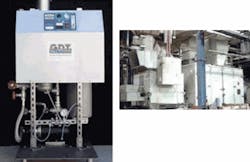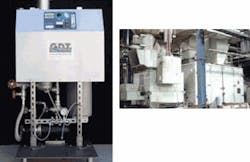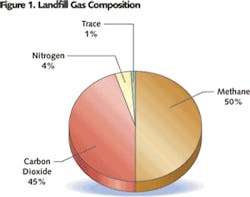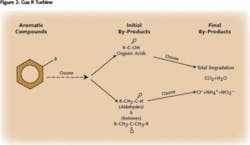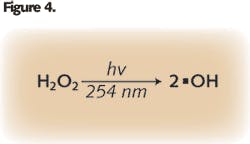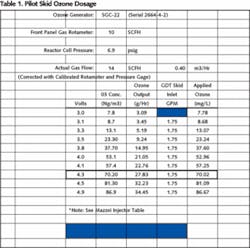Ozone/Advanced Oxidation of Methane Condensate at Landfill Co-generation Utility
The degradation of waste in a landfill is accompanied by production of gas by anaerobic bacteria that digest buried refuse. Under the right conditions, a municipal solid waste (MSW) landfill will produce up to 1.4 cubic feet of gas per lb of waste, 50% of which is methane gas (see Figure 1).
The environmental, health and safety hazards posed by the discharge of this explosive, greenhouse gas are significant. Thus, local, state and federal agencies tightly regulate all landfill gas emissions. Small landfill operations frequently dispose of the gas by burning it off with gas flares designed for methane gas combustion. Larger landfill operations, though, often have sufficient volume to utilize the methane as a fuel source to produce power. It’s during processing of the gas that some landfill co-generation facilities produce a waste stream too toxic for direct discharge to the environment.
In October 2002, Mazzei Injector Corp., a specialist in ozone use for water and wastewater disinfection and advanced oxidation, was contacted by a co-generation utility that was extracting methane gas from a 260-acre landfill in Salem Township, Washtenaw County, MI. The utility utilized the landfill methane as combustible fuel for three 30-megawatt gas turbines.
The plant was designed to operate as a closed system, with the exception of a small water stream generated as a by-product of the dehumidification process used to prepare the methane for combustion. The 10 gpm gas condensate generated by the drying process had a dark, oily appearance. Laboratory analysis of the waste condensate showed it contained a range of organic contaminants:
